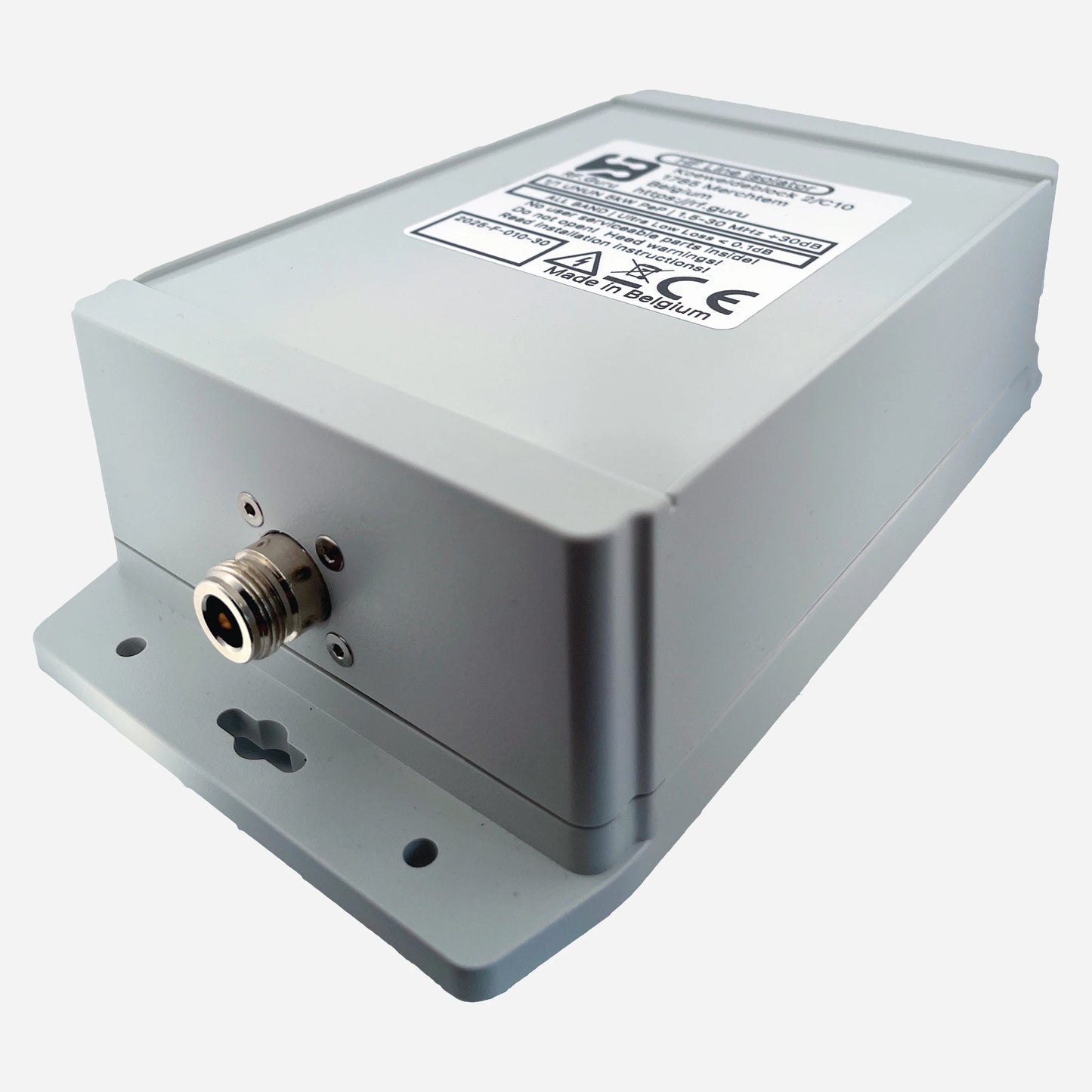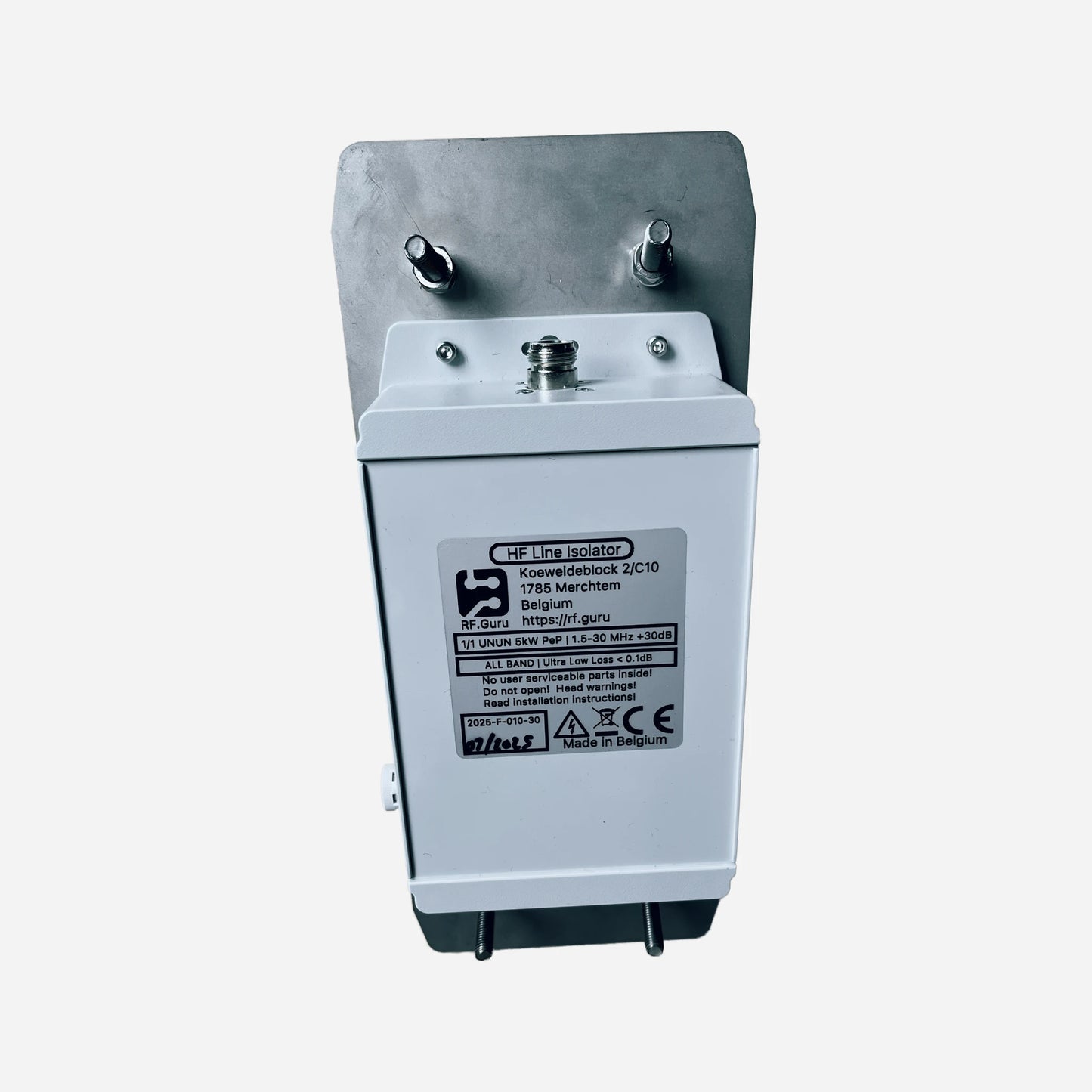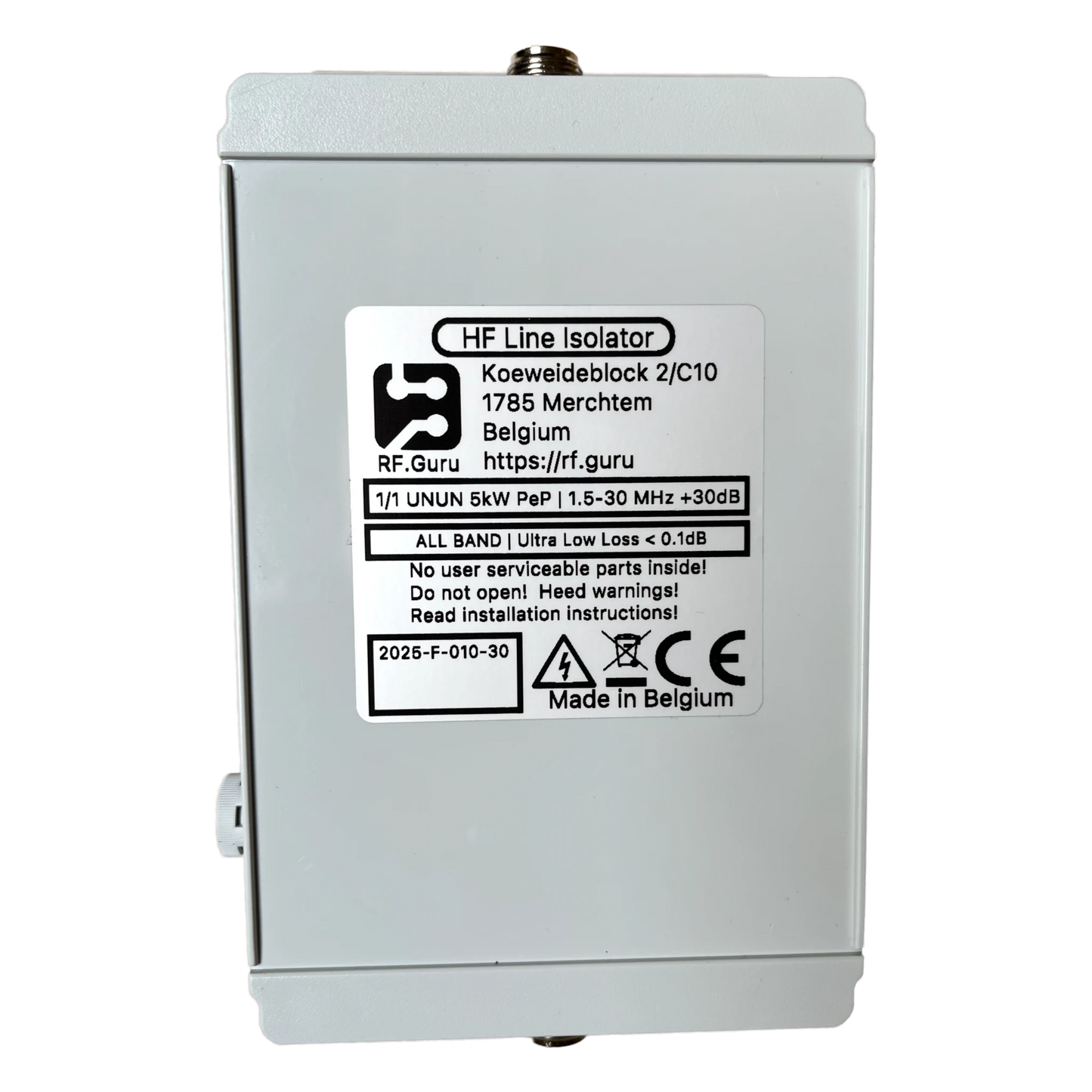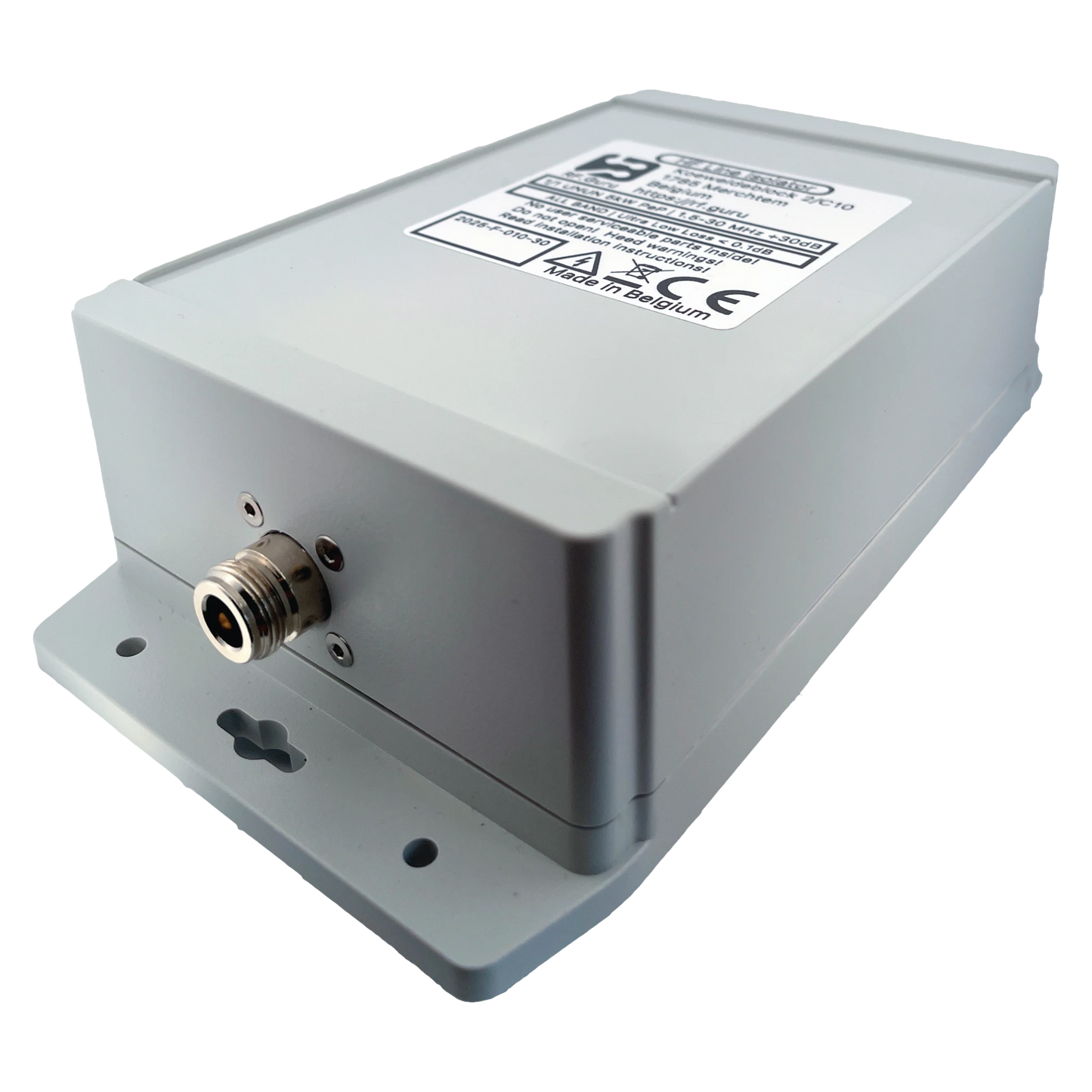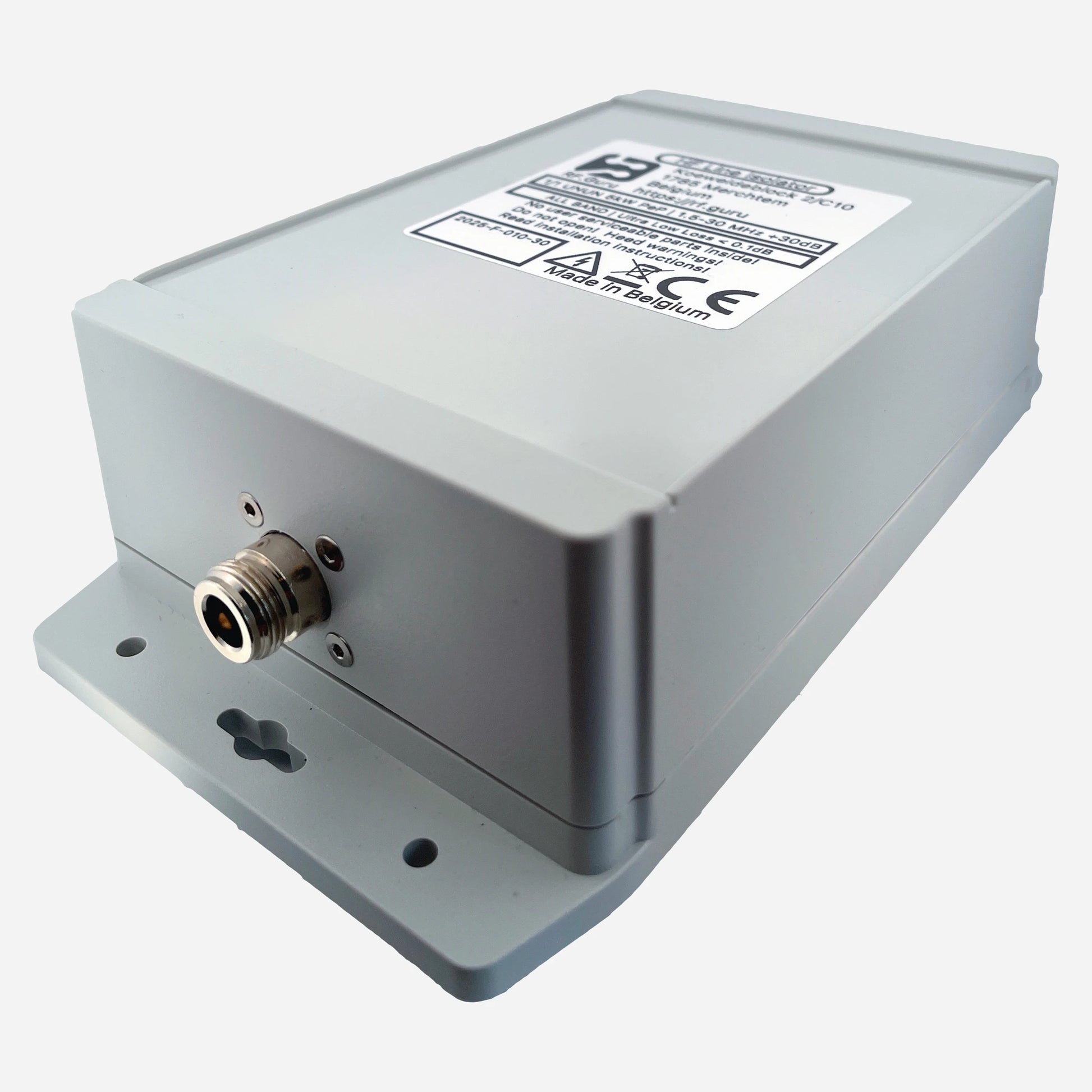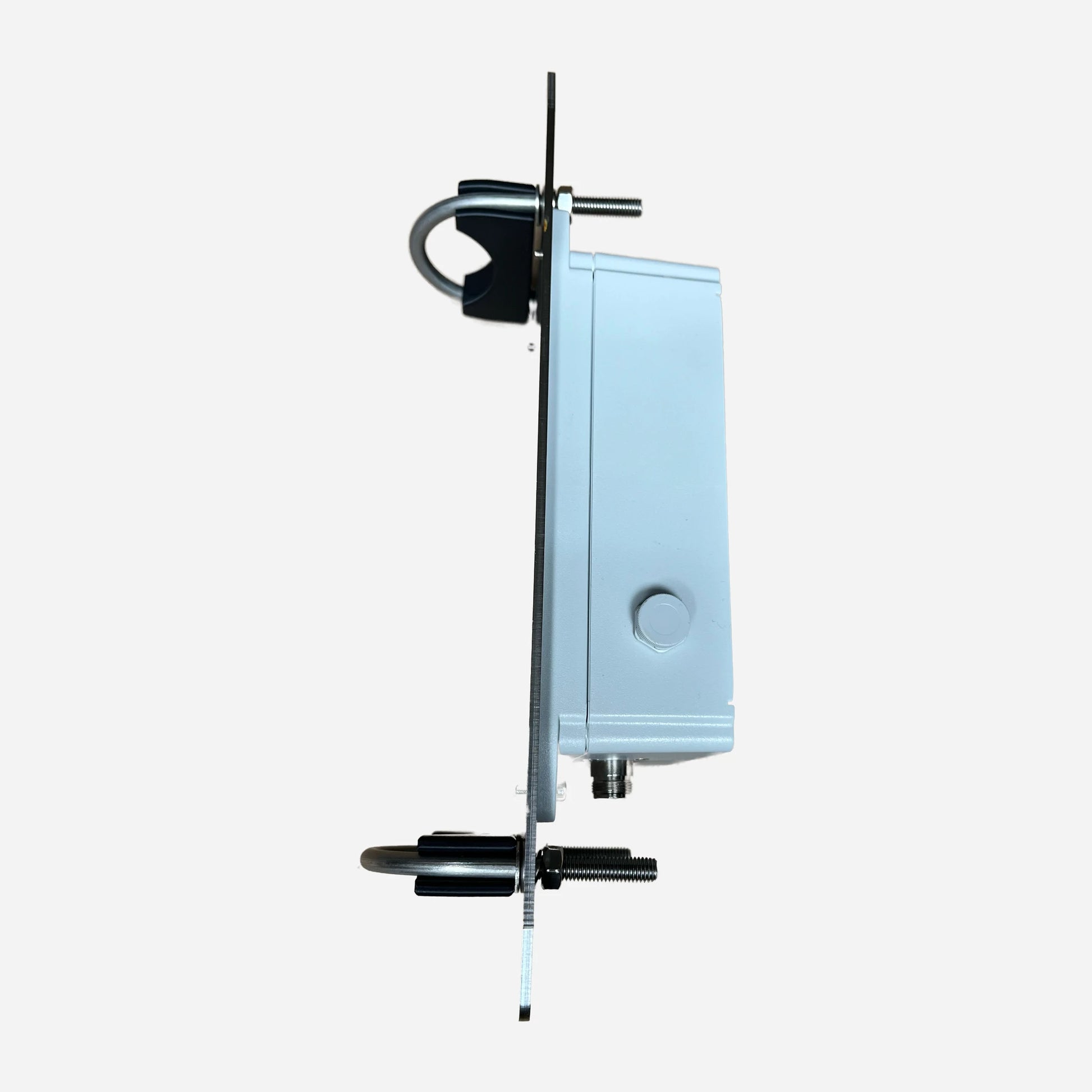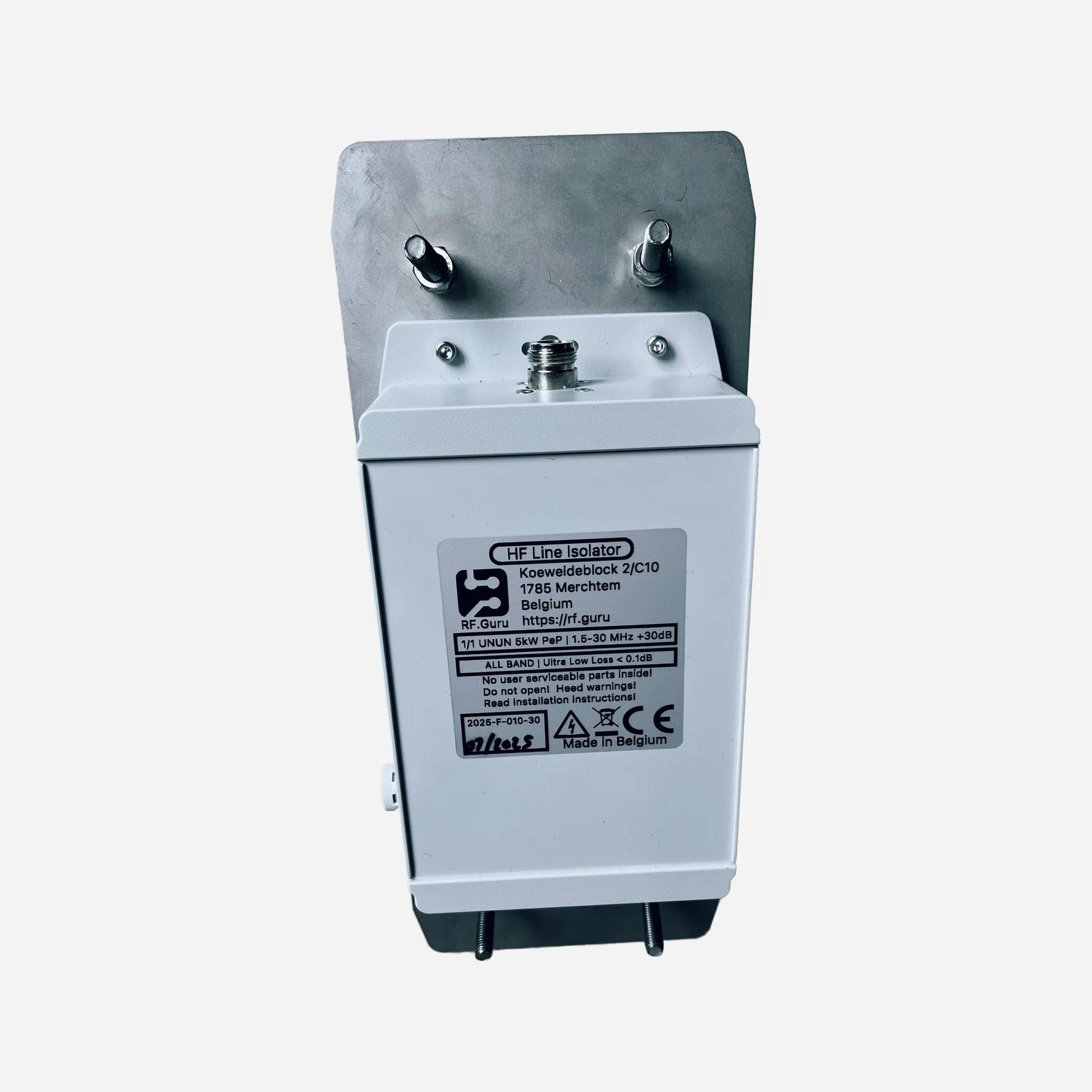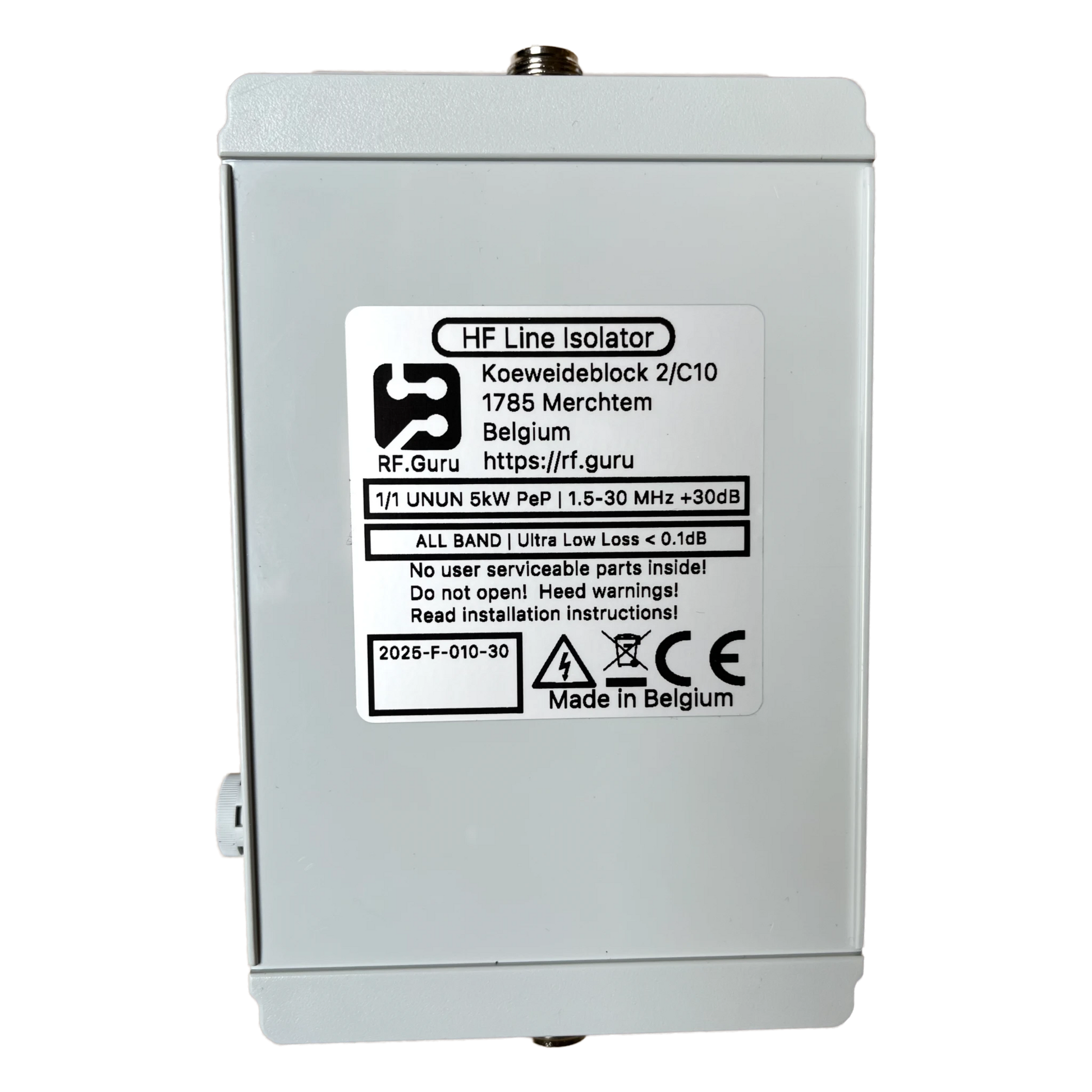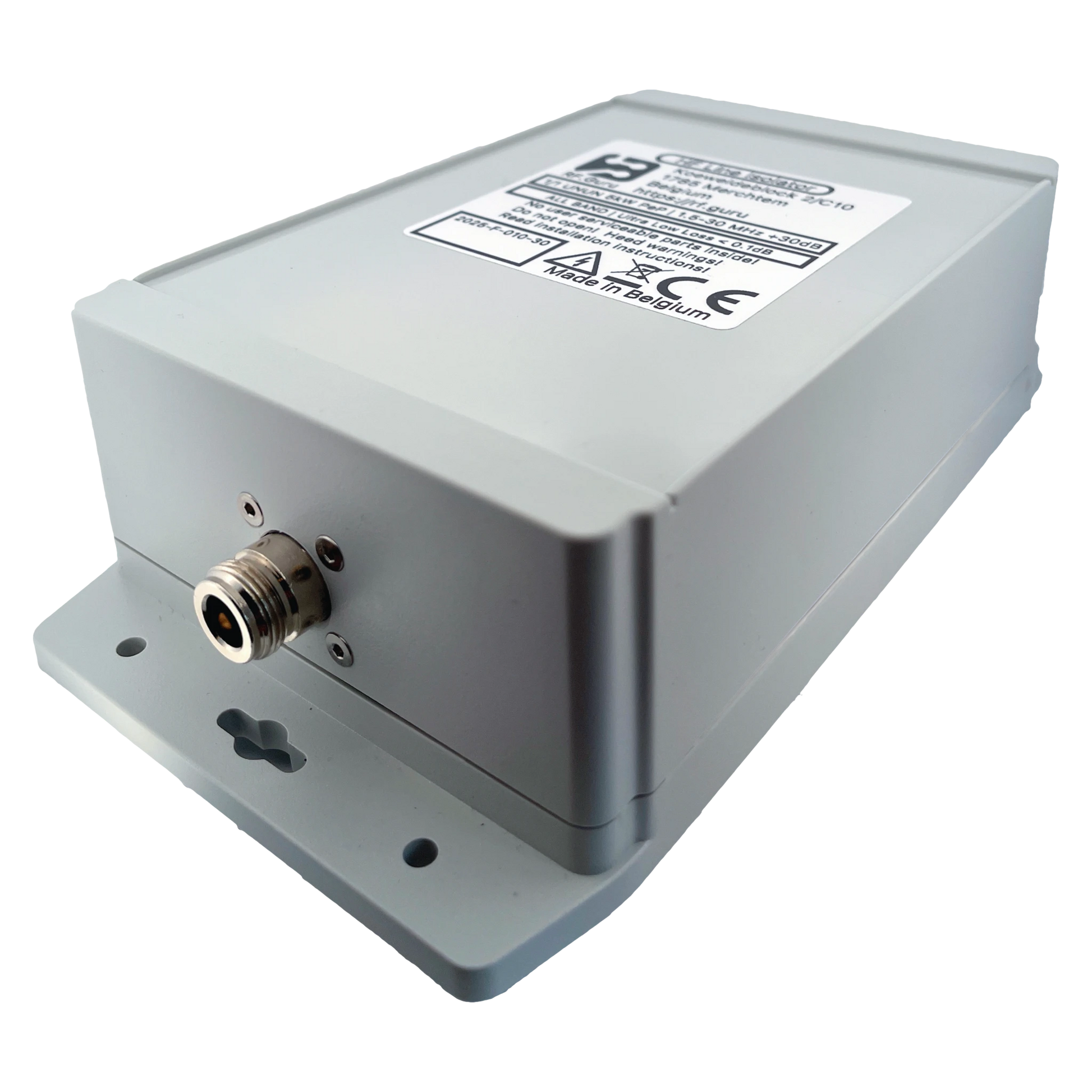RF Guru
10kW CCS Dual Core Wideband 160–10 m QRO 1:1 Current Balun or Choke
10kW CCS Dual Core Wideband 160–10 m QRO 1:1 Current Balun or Choke
Couldn't load pickup availability
This is the industrial-grade version of our dual-core line — built for operators running continuous high-duty cycles and legal-limit amplifiers. Constructed around two massive 4″ (≈ 10.2 cm) ferrite toroids with a wide-aperture winding, this choke delivers up to 10 kW CCS when fitted with 7/16 DIN connectors. Encased in a polycarbonate HV-coated enclosure with custom silicone gaskets and a decompression valve, it’s designed to thrive through contest weekends, salt air, and the toughest QRO environments. All performance figures are conservative real-world measurements, not simulations.
Baluns in a Nutshell
Why “Common-Mode” Is the Most Abused Term in Ham Radio
How Much Choking Do You Really Need — for RX and TX?
Purpose-Built for Amplifier-Level Duty
This wideband choke is the go-to model for amplifier outputs and station entry points. It safely handles extreme RF voltages and currents at low frequencies while maintaining excellent linearity. Two units in series, spaced by ~2 m of coax, yield full 10 kW CCS capability on 160–40 m with decent isolation. 10 kW CCS operation is limited to 160-40M, with 40M borderline !
Specifications
- Model: 2× 4″ (10.2 cm) ferrite toroids
- Winding: 11 turns of high-temperature coax
- Power rating: 10 kW PEP / 10 kW CCS (with 7/16 DIN)
- Connectors: PL-259, N-type, or 7/16 DIN (QRO recommended)
- Enclosure: HV-coated polycarbonate, silicone gaskets, decompression valve
- Reference @ 50 Ω: Vpk 1000 V, Vrms 707 V, Ipk 20 A, Irms 14.1 A
Measured Performance (Single Unit)
Measured per EMC-standard method using injected and sensed common-mode currents. Values shown are conservative and verified under load.
| Band | Choking Impedance (Ω) | Common-Mode Rejection (dB) |
|---|---|---|
| 160 m | 12.0 kΩ | 53.6 dB |
| 80 m | 16.0 kΩ | 56.1 dB |
| 40 m | 6.0 kΩ | 47.6 dB |
| 30 m | 2.0 kΩ | 38.1 dB |
| 20 m | 1.6 kΩ | 36.1 dB |
| 17 m | 1.4 kΩ | 35.0 dB |
| 15 m | 1.2 kΩ | 33.6 dB |
| 12 m | 1.0 kΩ | 32.0 dB |
| 10 m | 0.8 kΩ | 30.1 dB |
Alternatively, if your focus is the 30–10 m range, our Quad-Core High-Bands (30–10 m) version provides over 40 dB CMR, or you can install two standard chokes in series to achieve similar high-frequency performance by effectively doubling the total choking impedance.
Comparison — Standard vs Heavy-Duty QRO Chokes
| Feature | Standard Dual-Core QRO Chokes | Heavy-Duty Wideband QRO Choke |
|---|---|---|
| Core Size | 2.4″ (6.1 cm) | 4″ (10.2 cm) |
| Ferrite Mass | Standard HF grade | 3.5× more ferrite volume for thermal headroom |
| Power Rating (ICAS) | Up to 9 kW PEP | 10 kW PEP / 10 kW CCS continuous |
| Primary Use | General station choke / feedline suppression | Amplifier output / station entry / extreme QRO |
| Optimum Bands | 160–10 m (dual models) | 160–30 m strong, usable to 10 m |
| Connector Options | PL-259 / N-type | PL-259 / N-type / 7/16 DIN (QRO preferred) |
| Typical Installation | At antenna feedpoint or coax transition | After PA and outside shack for full isolation |
Maximum ICAS/CCS Power Ratings
| Connector Type | 160–40 m Band | 30–10 m Band | 6–2 m Band | Limiting Factor |
|---|---|---|---|---|
| PL-259 / UHF | ≈ 2.7 kW ICAS | ≈ 1.3 kW ICAS | ≈ 0.6 kW ICAS | Connector |
| Type-N | ≈ 10 kW CCS* | ≈ 5 kW ICAS | ≈ 2 kW ICAS | Coax |
| 7/16 DIN | ≈ 10 kW CCS* | ≈ 5 kW ICAS | ≈ 2 kW ICAS | Coax |
*For full 10 kW CCS operation, use two units in series fitted with either Type-N or 7/16 DIN connectors, separated by ≈ 2 m of coax, and equipped with dual ventilation ports instead of the standard single decompression valve.
Installation Guidance
- Place one choke directly after the PA and a second at the station entry point.
- Maintain 1.5–2 m of coax between units for optimal isolation.
- Mount horizontally or vertically — housing is fully sealed and pressure-equalized.
- All impedance and rejection ratings are conservative and measured under load.
All RF.Guru Lab chokes are measured using industry-standard EMC common-mode procedure. Two precision-calibrated probes are used: one injects controlled common-mode current into the choke, and the second measures the current that passes through. This setup directly quantifies Common-Mode Rejection (CMR) in dB — the only metric that accurately represents RF suppression on your coax shield.
Traditional VNA tests in differential mode only measure the impedance between inner and outer conductors. That approach looks good on a Smith chart but reveals nothing about actual common-mode performance. Our dual-probe EMC method, aligned with recognized standards, captures true suppression under operating conditions — what really matters on the air.
Mini-FAQ
-
Q: How does this differ from the standard dual-core chokes?
— It uses larger 4″ (10.2 cm) ferrites for more magnetic volume, higher voltage standoff, and continuous 10 kW CCS duty. -
Q: Can I use it alone?
— Yes, but two in series (with ≈ 2 m coax between) provide maximum isolation for high-power stations. -
Q: Why do the high-band values drop?
— #31 material is optimized for low to mid-HF; for 17–10 m use our 4-core wideband variant (+30 dB CMR). -
Q: Connector options?
— PL-259, N-type, or 7/16 DIN (7/16 DIN recommended for QRO and CCS service). -
Q: Are these values theoretical?
— No, all data are conservative, measured with calibrated probes per EMC standards under load.
Interested in more technical content? Subscribe to our updates for deep-dive RF articles and lab notes.
Questions or experiences to share? Contact RF.Guru.
Share
